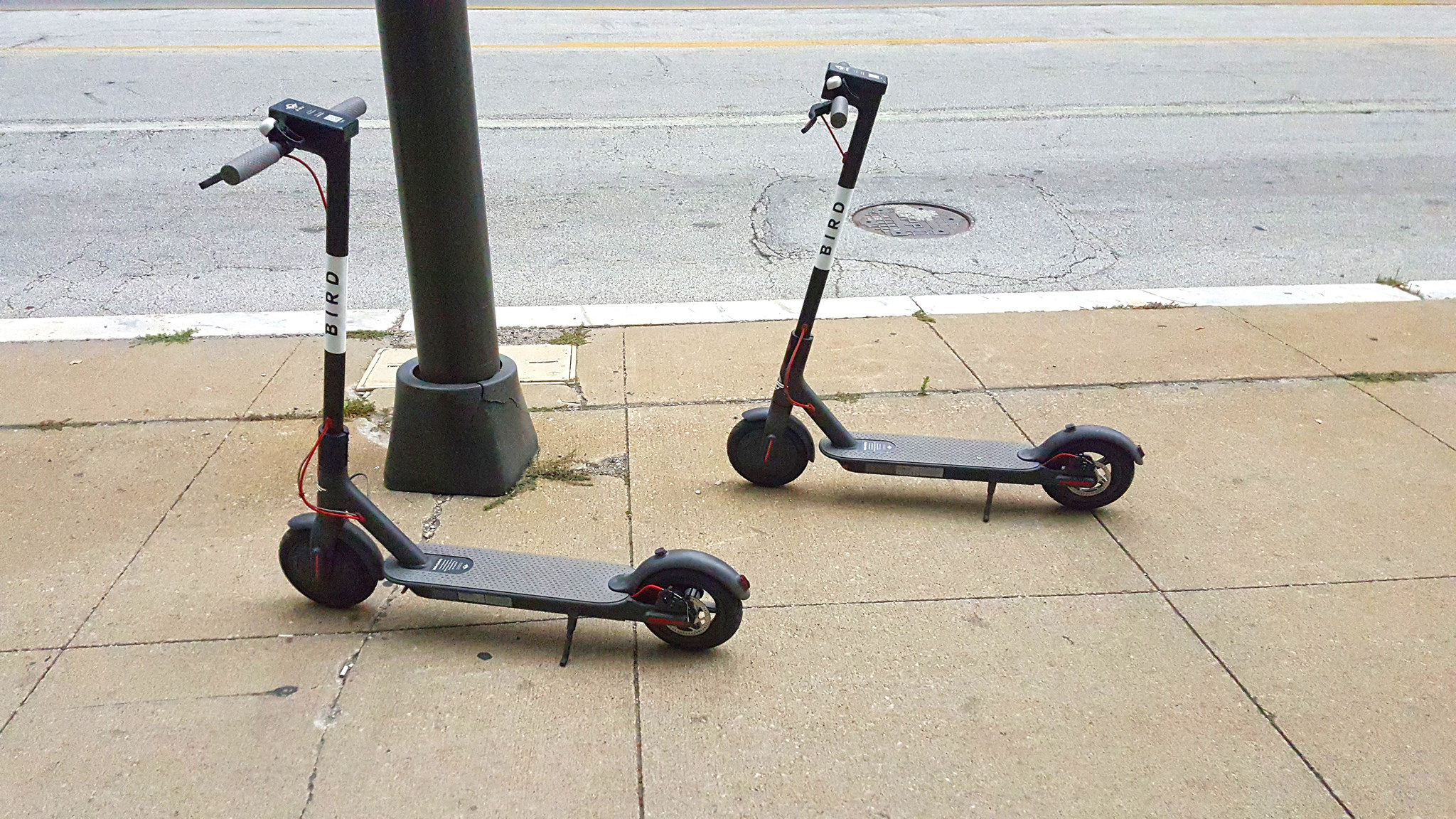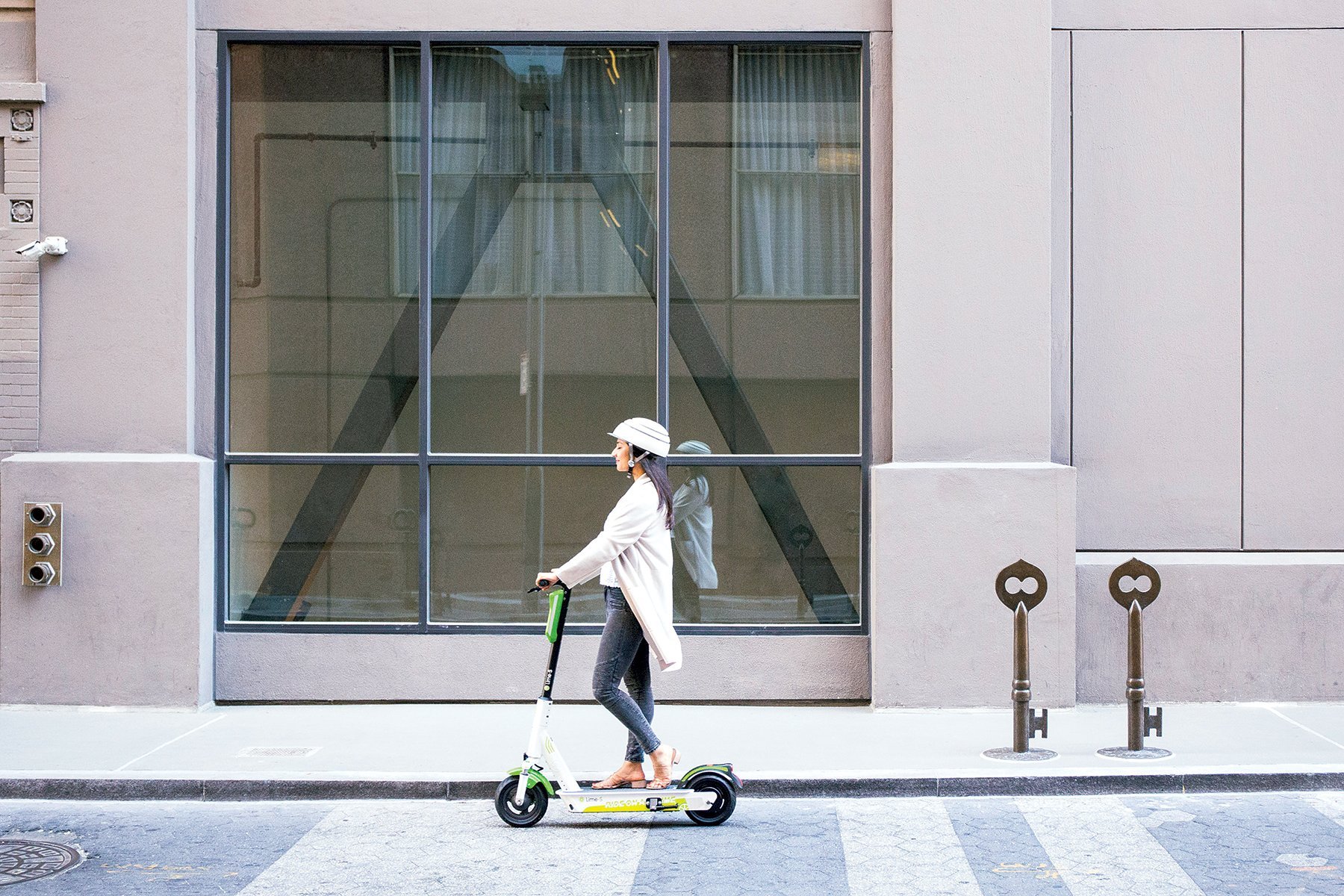No one ever tells you how to operate a scooter. Easy as riding a bike, right? Or so you might think as you ponder the myriad dockless, app-driven electric scooters on city sidewalks, just waiting for you to hop on.
Turns out it’s a bit more complicated. Judging by the number of scooter-related injuries in emergency rooms, Washington has its share of scooter dunces. Yet while self-respecting adults might feel perfectly comfortable asking for tips about some other form of motorized transport, there’s something vaguely embarrassing about seeking instruction on how to ride a vehicle usually associated with elementary school.
But you know what’s even more embarrassing? Telling your family you spent the afternoon at urgent care after a scooter boo-boo. So although I was once an eye-rolling skeptic, I decided to give scooters a try in order to make myself an actual expert, the kind who can suggest best practices, to use a phrase typically not employed in conjunction with scooters.
After all, someone has to be an expert: For all the scoffs they leave in their wake, scooters appear to be here to stay. Starting in 2019, operators including Lime, Bird, Lyft, Skip, and Spin may be permitted to maintain up to 600 scooters in the District, versus 400 during a pilot program that’s wrapping up. Those fleets could grow by up to 25 percent every three months, pending regulators’ approval. With more startups trying to secure permits to operate in the city, the total number of scooters available for rent could reach 7,000 by spring.
One thing that became obvious the more I rode: Scooters are a really fun way to get around—and being amused isn’t always conducive to being alert. When I’m riding, I think about how nice the rushing air feels on my face and how much closer sustainable, convenient, and affordable urban mobility feels thanks to people like me. I don’t necessarily think about how great an idea it would be to look at the ground ahead of me.
Clearly, I’m not alone. Since electric scooters first showed up here in September 2017, when the District Department of Transportation kicked off the pilot program, 28 crashes and 21 injuries for dockless scooters and dockless bikes, collectively, have been reported to DDOT. (The bike and scooter companies, which report the data, don’t yet separate out scooter mishaps.) Presumably, many more incidents go unreported.
In September, DC saw its first fatal accident involving a rented scooter. An SUV struck 20-year-old Carlos Sanchez-Martin, who was riding near Dupont Circle. He was pinned under the vehicle and dragged about 20 yards. Police have yet to determine who was at fault, and no charges have been filed.
James Phillips, an emergency physician at George Washington University Hospital, says GW’s trauma center is seeing victims of scooter-related accidents at least once a week. Some of the injuries are minor, such as scraped knees and elbows. “But we’ve seen much more serious injuries, such as dental trauma and facial fractures,” Phillips says. “We’ve seen head injuries.”
One reason is that helmets aren’t required. Scooter companies can only suggest that riders wear protective gear. Yet another factor contributing to mishaps, says Phillips: “Alcohol. I’ve definitely seen intoxicated students riding these.”
For those who’d like to scooter to their next meeting, date, or brunch and want to boost their chances of not getting injured, here are other things to keep in mind.

Scootering 101
1. If you’re a novice, practice braking before riding at high speeds. It can actually take a while to figure out how to come to a stop smoothly.
2. The small wheels and low ground clearance make riders especially vulnerable to bumps, rocks, and unevenness. To stay stable, slow down when navigating tricky terrain, and keep your knees slightly bent.
3. Look out for grates. Those little wheels can get caught in the spaces.
4. Avoid wet roads. Scooter tires can lose traction fast.
5. On a congested sidewalk, walk your scooter. Scooters must stay off sidewalks in the Central Business District, an area that stretches south of Massachusetts Avenue, Northwest, to Foggy Bottom, then east to encompass the Mall.
6. When passing parked cars, watch out for drivers opening car doors.
7. Don’t ride with a passenger, and don’t ride one-handed.
8. If you have the option of a sidewalk or a bike lane, the bike lane is the safer call.
9. Don’t exceed the weight limit for riders, about 220 pounds.
10. Yeah, we know you’ve heard it before, but a helmet is always a great idea. Don’t have one? Companies including Lime and Bird will send you a helmet for free.
11. When parking a scooter, leave it out of the way of foot traffic.
12. Prepare for the unexpected. Even prudent riders can run into trouble when a scooter malfunctions—there have been reports of failing brakes and scooters coming apart mid-ride. Xiaomi and Segway are among the manufacturers supplying firms such as Lime and Bird, and they say scooters should be stored in a cool, dry place. Staying outdoors for long periods is apparently bad for them.
This article appears in the January 2019 issue of Washingtonian.















